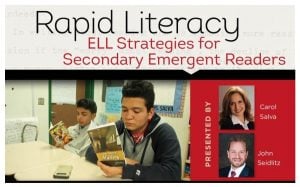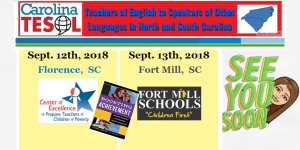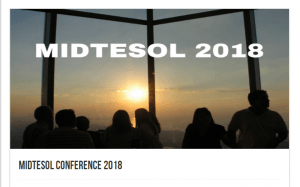Kenzie Twitchell and I are back!
You can listen to the show in Soundcloud, Itunes or right here:
In Part I of this topic, we talked about Language Experience Approach and who to follow to get great ideas about how to support your students to begin reading in the target language. You can read all about that and/or listen to the podcast here: bit.ly/BAP034.
In this Part II episode we are talking about activities that further boost literacy and language for newcomers and under schooled learners. Now that you know how to teach a person to read, let’s look at what the newcomer can do to propel their own learning. Older learners can absolutely take ownership of their literacy in a way that a 5 year old cannot.
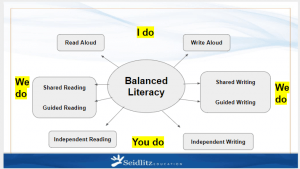 I suggest that you start by training your students to understand balanced literacy as we mentioned in the last episode. Now that they are beginning to decode text, what can you do to keep that momentum going and hook them as readers. Let’s remember that every day they understand more English. And with comprehensible input, they are able to gain even more of the target language each day.
I suggest that you start by training your students to understand balanced literacy as we mentioned in the last episode. Now that they are beginning to decode text, what can you do to keep that momentum going and hook them as readers. Let’s remember that every day they understand more English. And with comprehensible input, they are able to gain even more of the target language each day.
The students know that they must read more to become a better reader. So they know the value of tracking the print with their eyes when anyone reads aloud to them. That would be a read aloud by a peer, the teacher or a tech device. I’m fine if they want to use Duolingo or other language learning software on their own time. But in our class, we are capitalizing on compelling text and co-created text as we explained in Episode 34. I’ll talk more about units of study in the next episode.
For daily practice, I highly recommend www.newsinlevels.com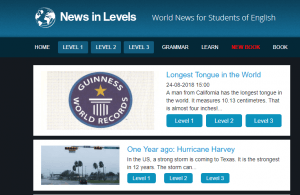
Kenzie was familiar with another great free site called www.newsela.com
Both of these offer choice and leveled non-fiction text about current events.
We discussed making Kahoots with the class and then allowing them to jigsaw content to make their own Kahoot quizzes. You may remember that we began the year with a #SelfieKahoot about me and then one about them, so transitioning into content with that activity is natural.
Our students should be reading fairly quickly if we are using Language Experience Approach, tracking print and chorally reading daily. It’s important that the students understand their role in gaining sight words and phonemic awareness. I explain this to the students the same way I train teachers. I talk about multiple exposures and show them how they will get blends with more exposure to text as well. (I use the example of the word “Iphone.” They all know this word. They all understand it and even start to tell you that they know the ph sounds like the /f/ sound. They know this because this word is meaningful to them and they’ve seen it multiple times in context. It’s a great example of the power of tracking print and reading more. It helps us illustrate how they will get more sight words and phonemic awareness.
Once they are reading, I want many leveled text options that offer choice. I cite the work of Stephen Krashen and the importance of Free Voluntary Reading. Of course, they need to become readers first, but we want to be ready with choice text and time for reading in class. For this I turn to Saddleback Publishers.  I love their High Interest, Low Readability leveled books for older Emergent Readers. Here is a video of when we got our first shipment of Saddleback books:
I love their High Interest, Low Readability leveled books for older Emergent Readers. Here is a video of when we got our first shipment of Saddleback books:
We discuss using Language Experience Approach to debrief grade level concepts and we mention the power of Google Translate for students when they are alone and wanting to practice pronunciation and reading.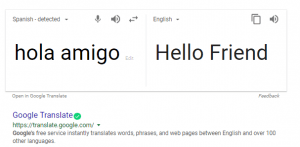
Kenzie shares a few great resources with us
She directs us to
If you think these are too high for your newcomers, just wait! Soon you will need things like this to differentiate for the students who zoom ahead in reading.
Kenzie also recommends Nearpod and we both vow to look into it more closely.
I mention QSSSA questioning strategy in this episode. Here is a 30 min VirtuEL PD video on how to do that. The example is social studies but the way you would question is the same for all classes.
Last but not least, I mention this great resource by http://www.ergo-on.ca/ that was shared with me by Jeffery Robinson of Thames Valley District School Board in Ontario. This great sight allows you to download High Interest, Low Reading Level books and also read them online.
As I’ve mentioned before, my strong recommendation for the newcomer ELD class is for you to co-create texts with high interest and grade level content using Language Experience approach. Here is a video of my students using the anchor charts we have created together. For more on that, including videos, check out Part 1/Episode34
Thanks again to Kenzie Twitchell of Salt Lake City. She shared some great links and also shared her interest in how to help her newest students. Be sure to follow her at @KenzieT_SLC
Have a great school year, Eduheroes!
My best,
Carol
PS: We hope to see you at one of the events below! Also, feel free to reach out if I can help with training, coaching or modeling. You can reach me at carol.salva@johnseidlitz.com
Join us in Houston, Texas on Oct 4th for Rapid Literacy.
Join me in South Carolina on Sept 12 & 13 for Boosting Achievement with Carolina TESOL
Join me at MidTESOL18 on Sept 28 & 29th.
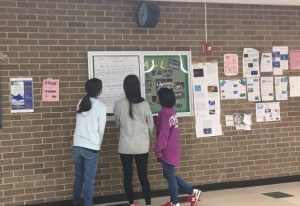 ‘
‘